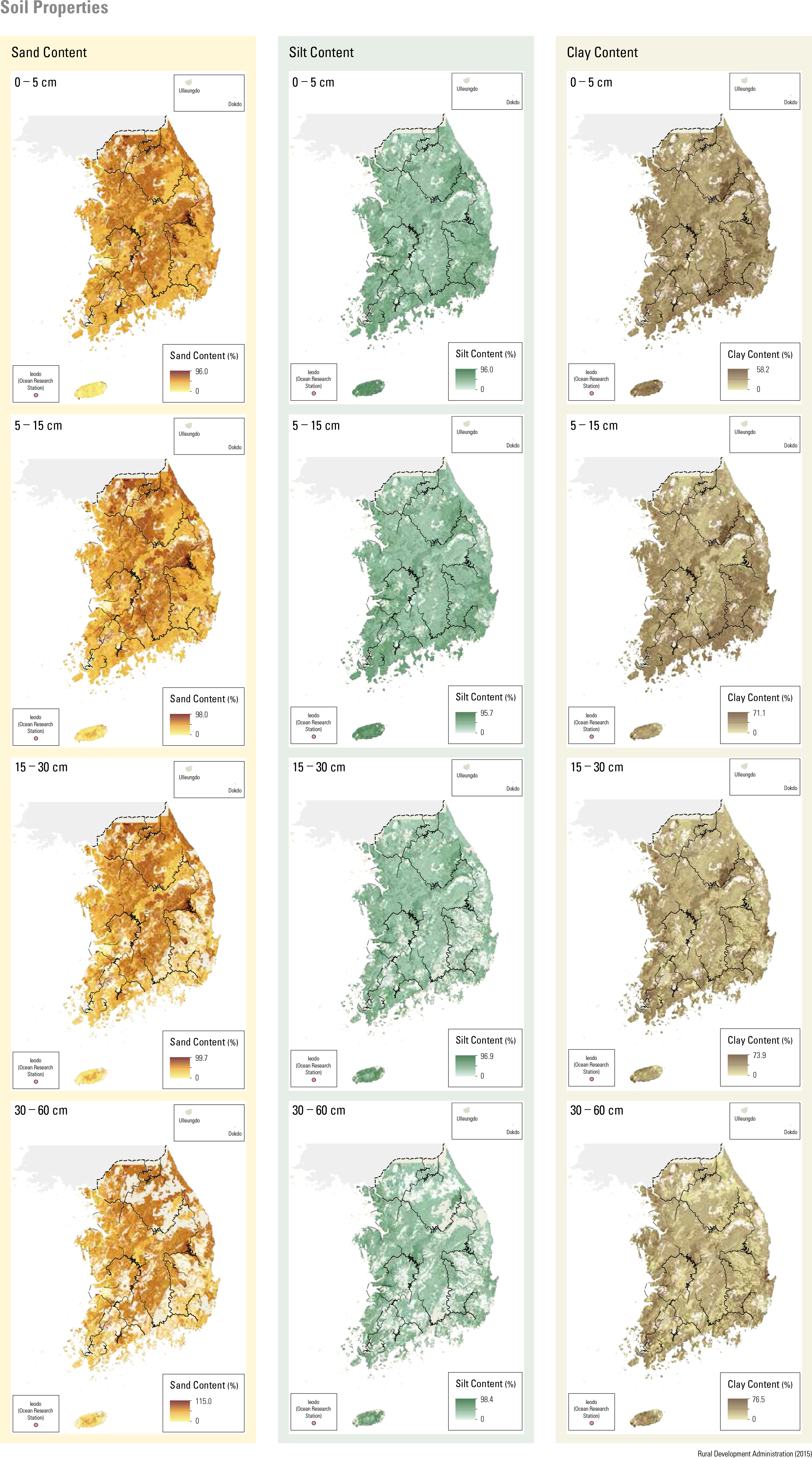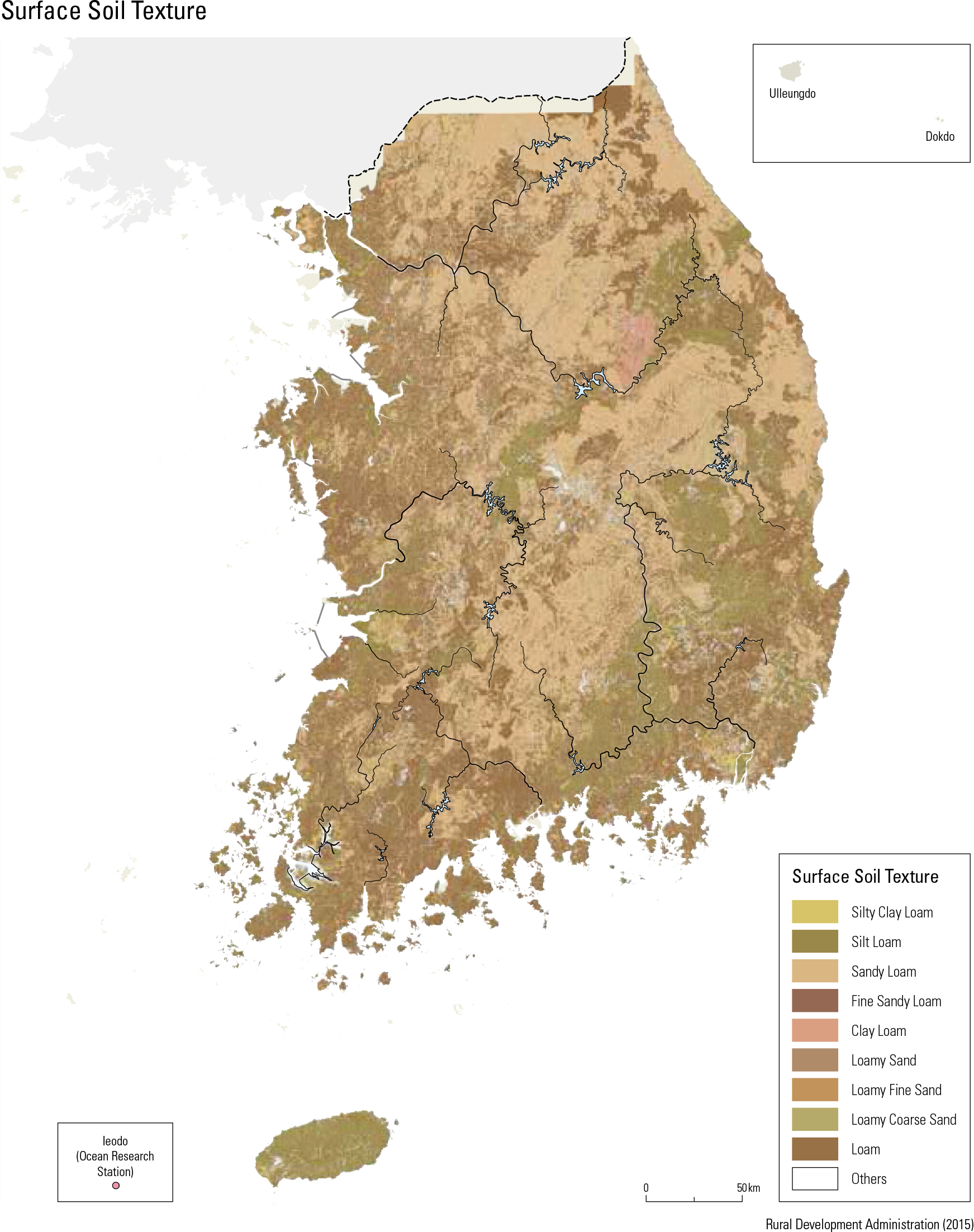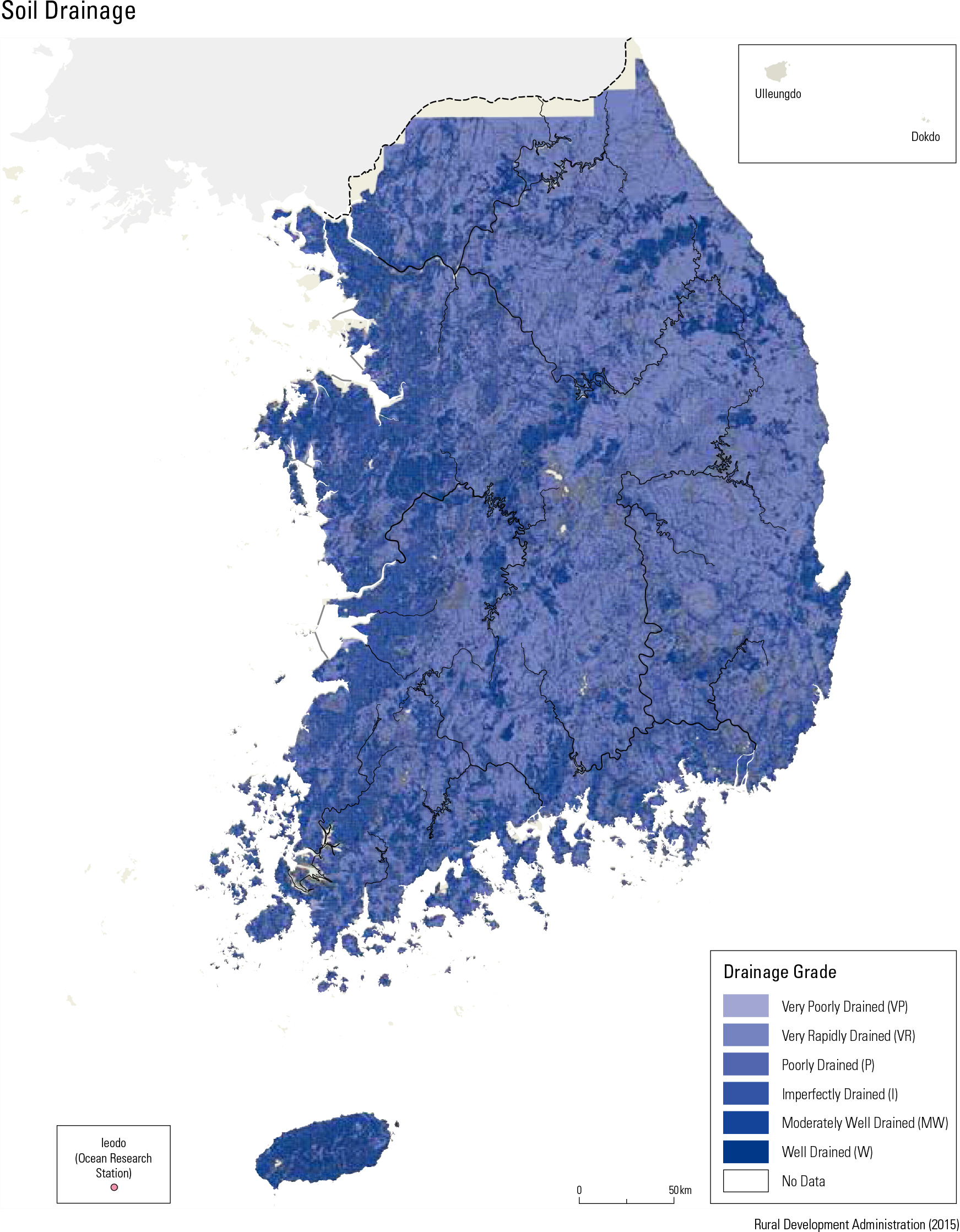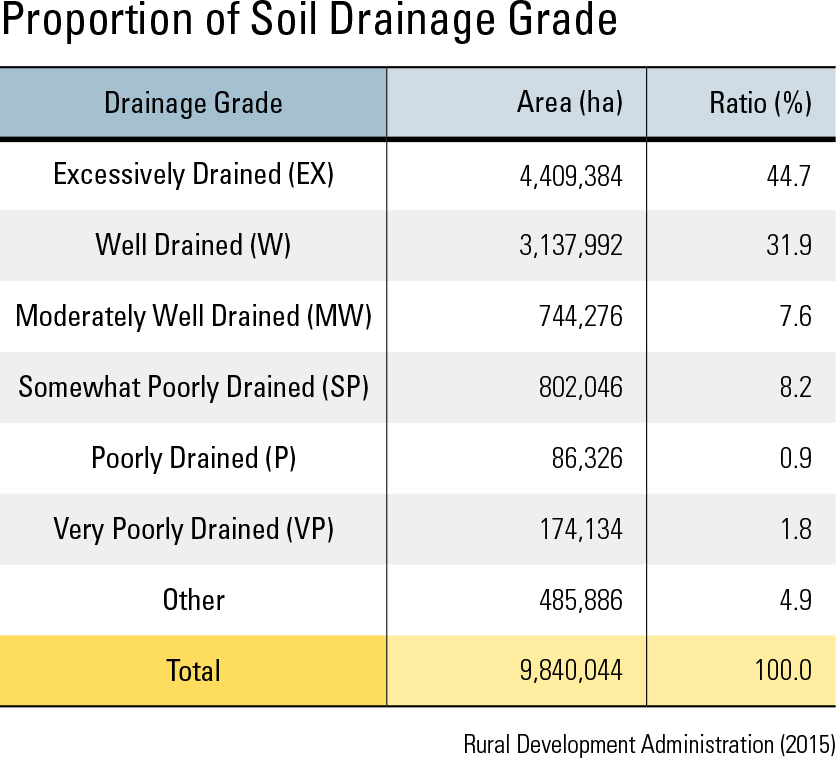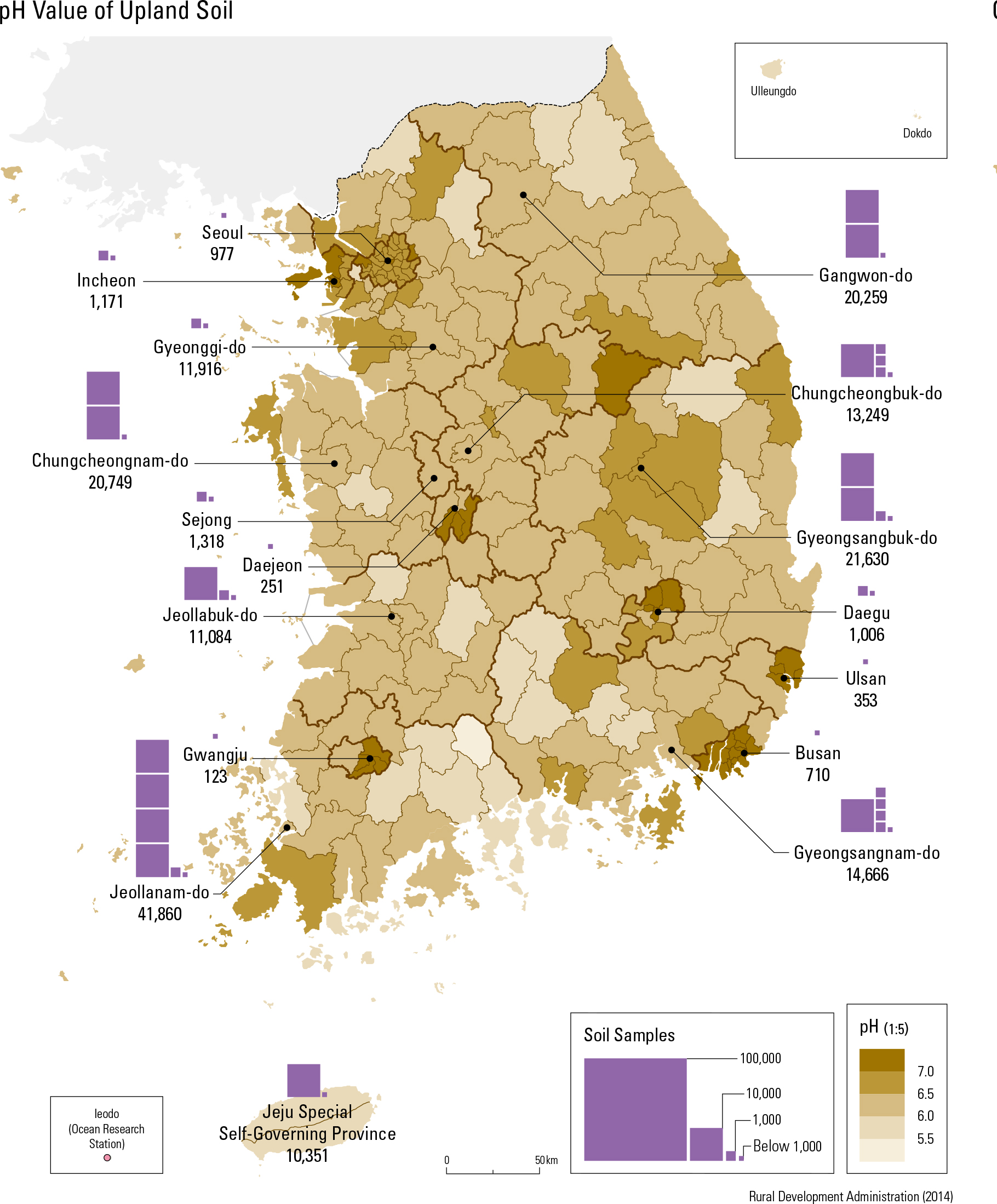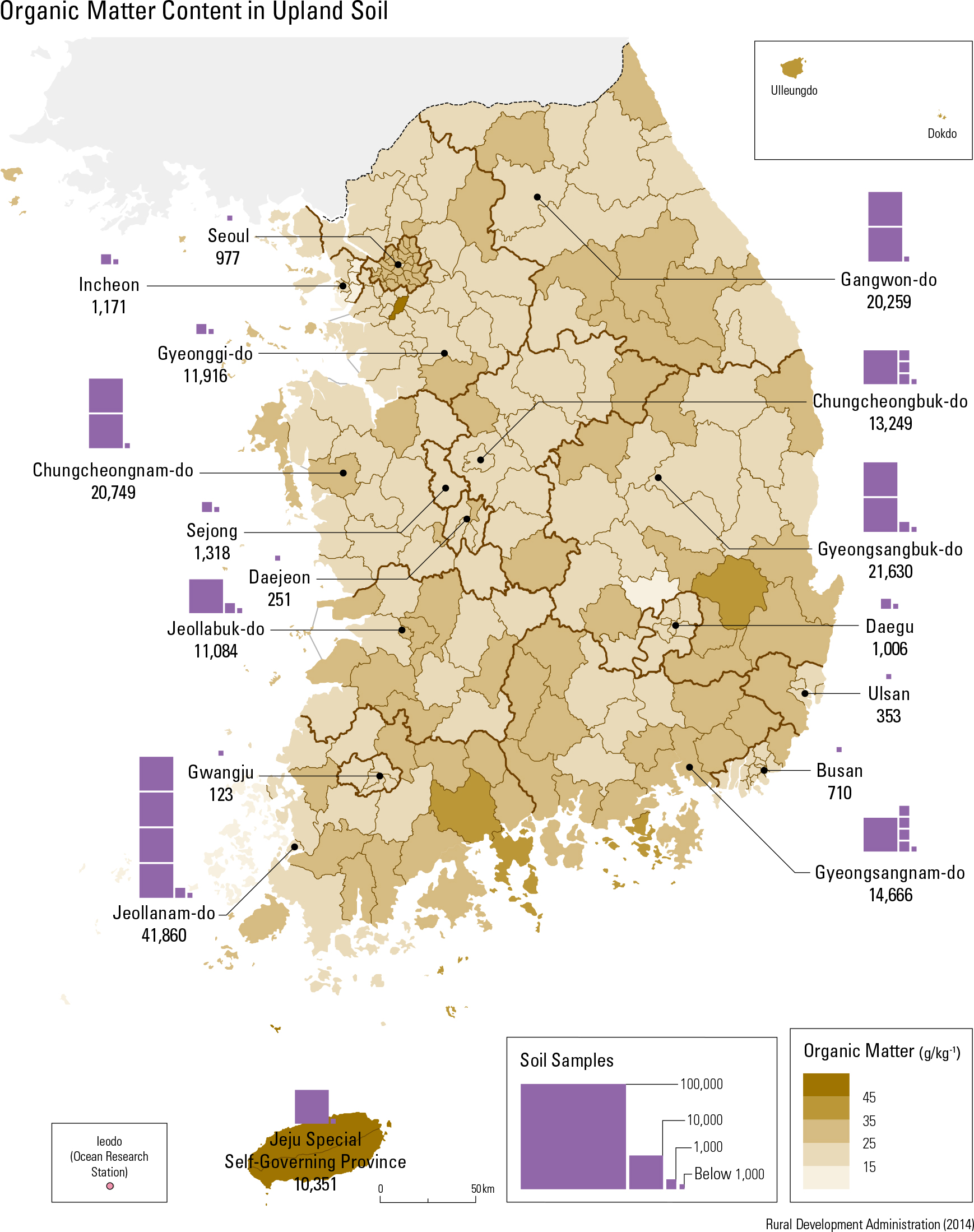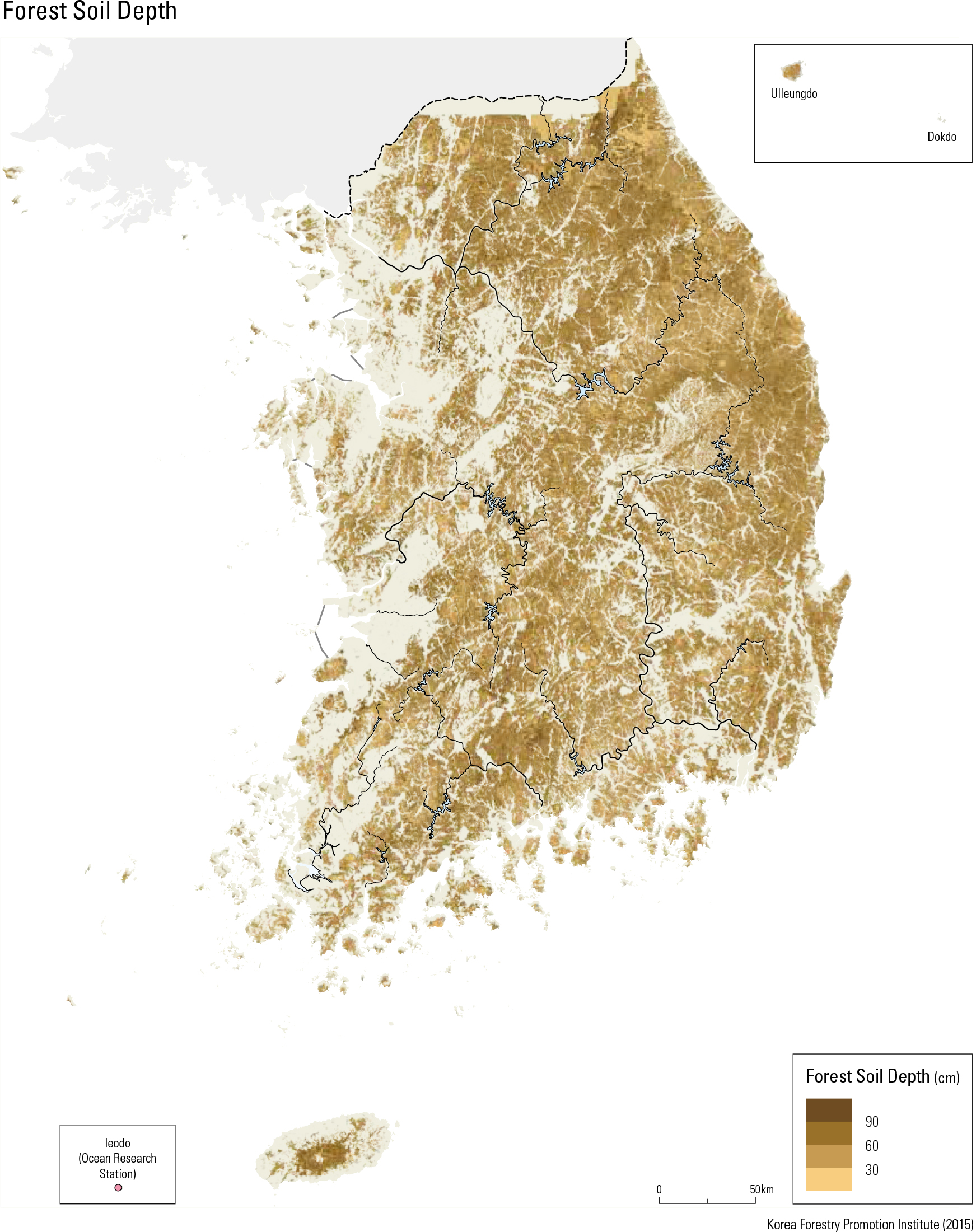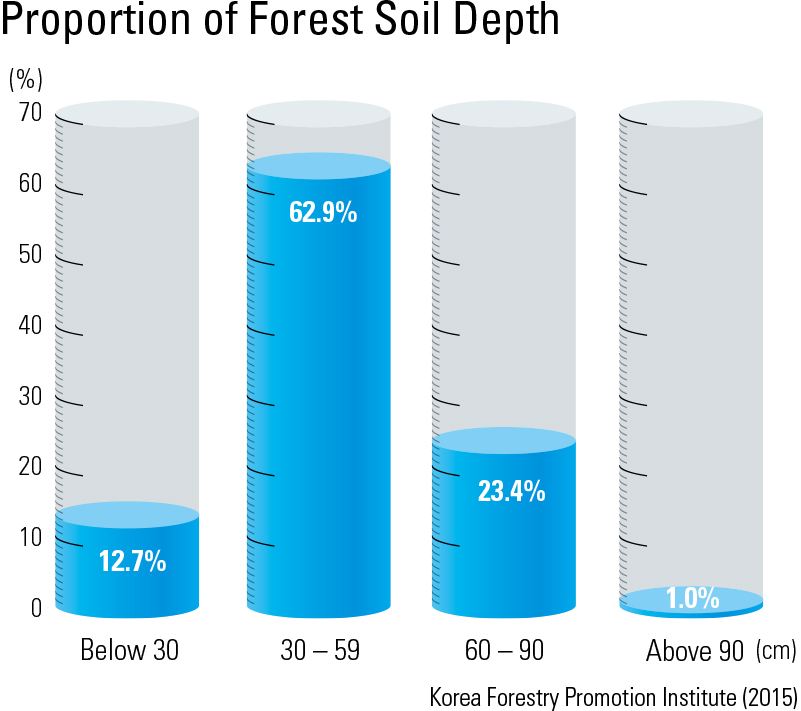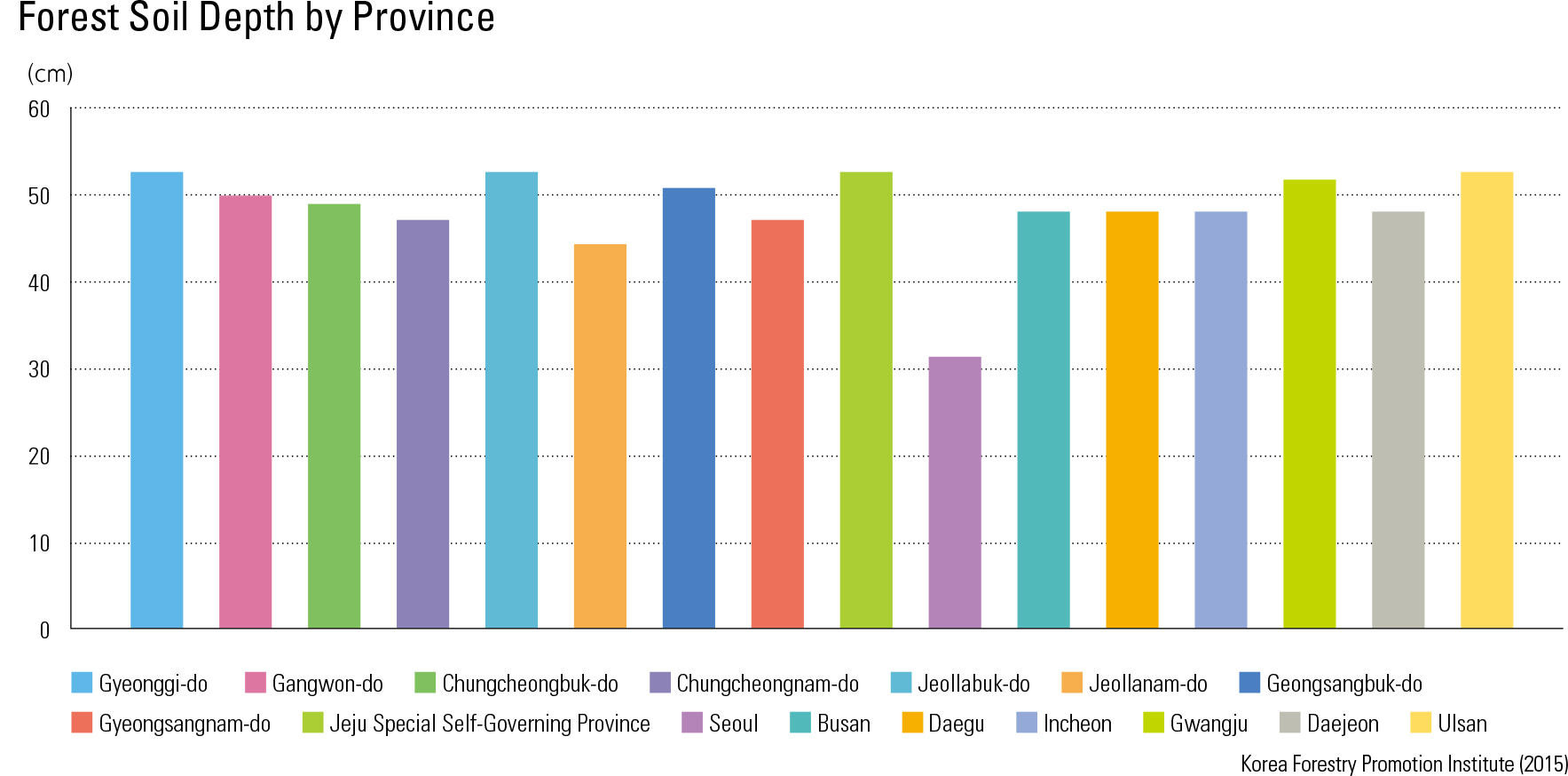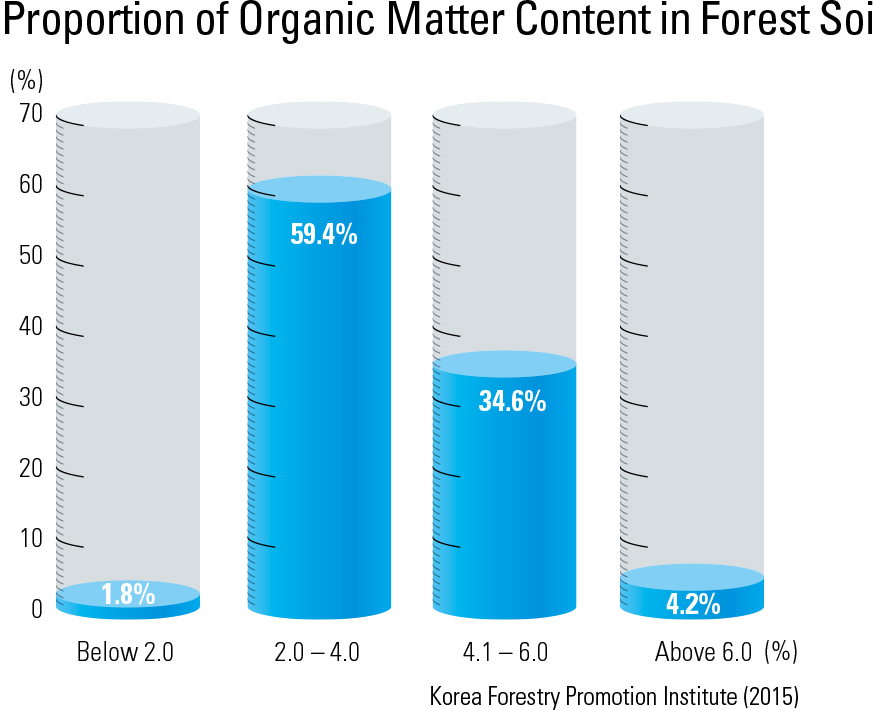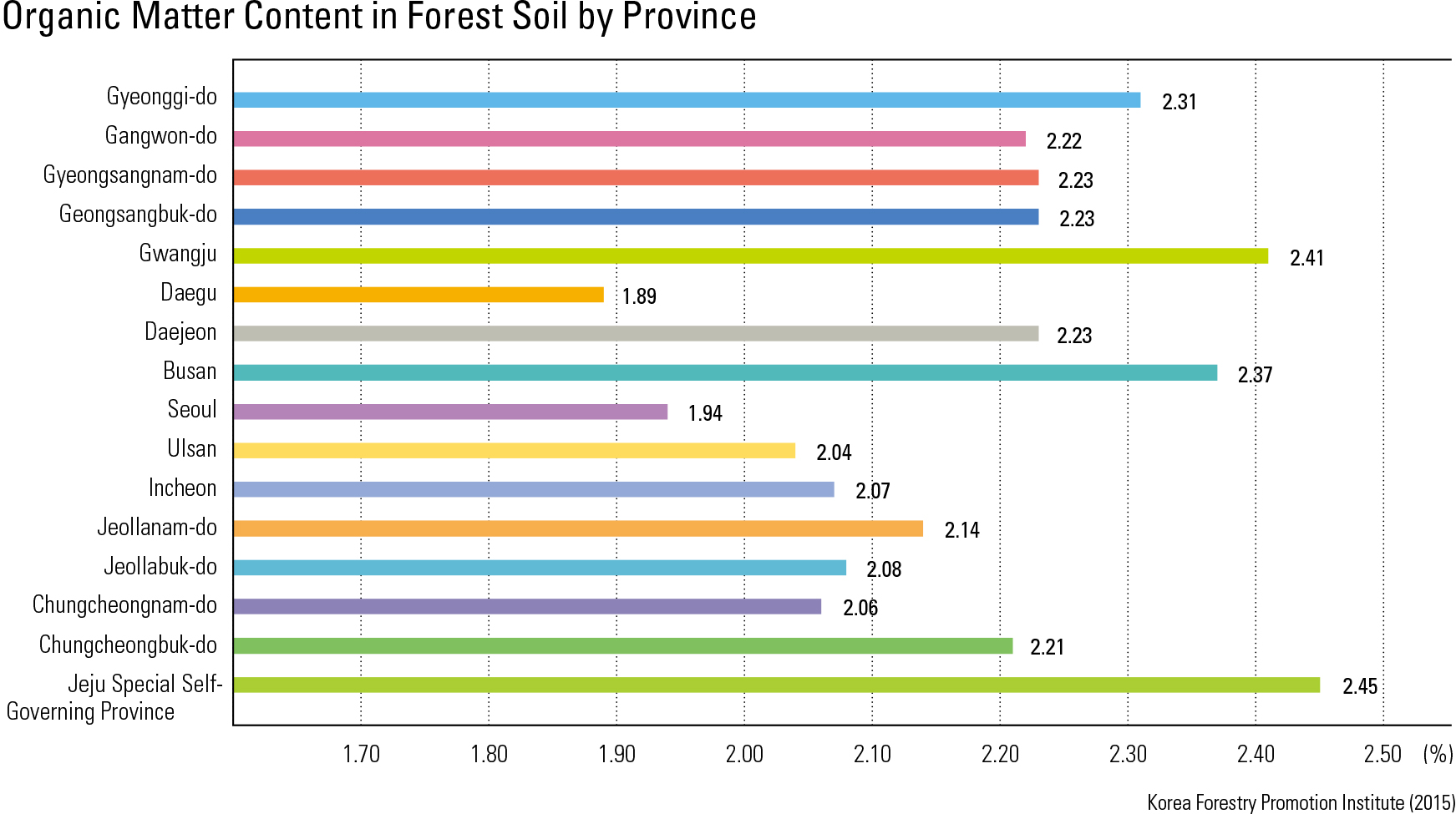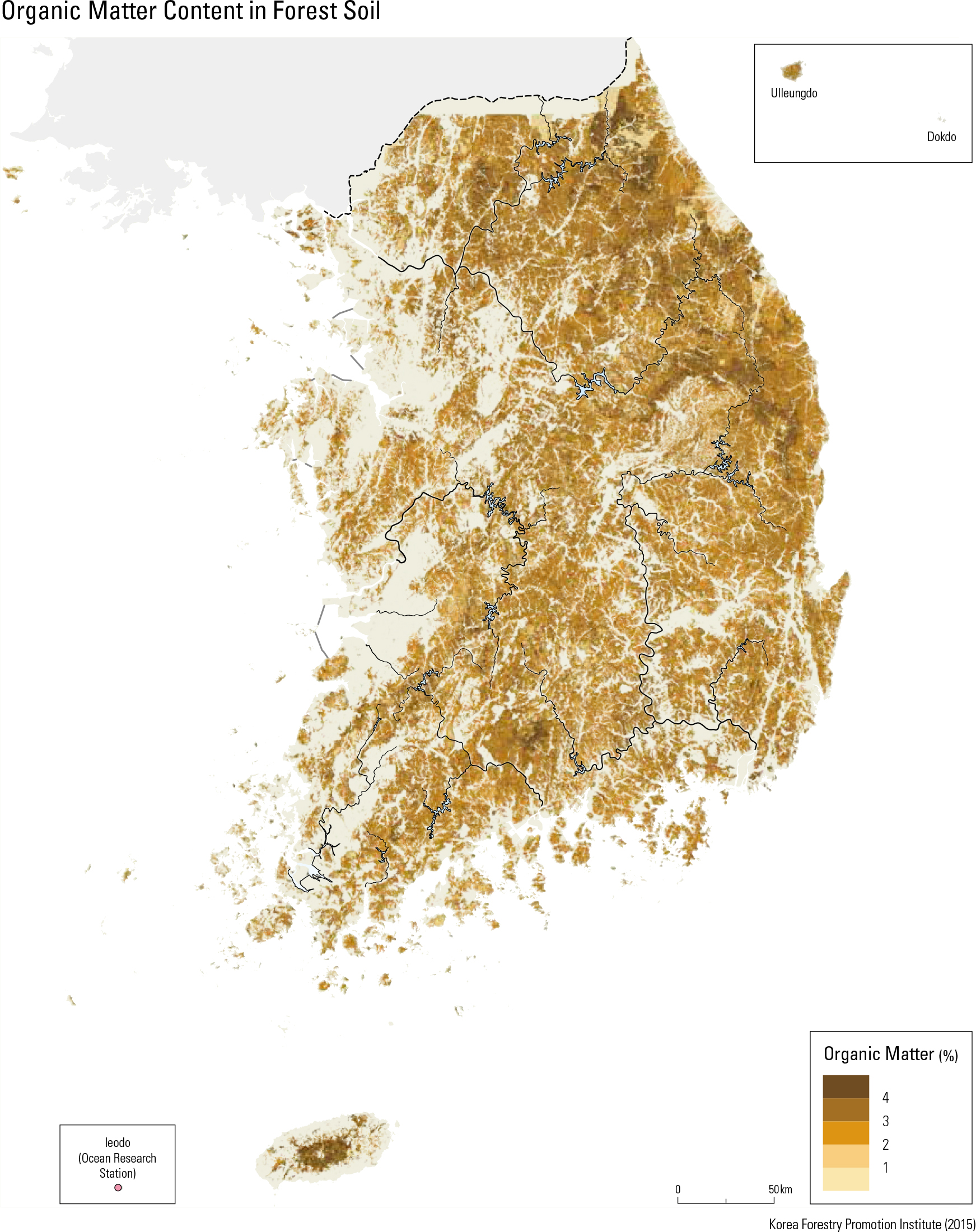English II
Soil texture is determined by the relative pro- portion of three kinds of soil mineral particles; sand (0.05 – 2 mm), silt (0.002 – 0.05 mm), and clay (particles smaller than 0.002 mm). Soil tex- ture is often considered as one of most important attributes that controls the physical and chemical characteristics of soil. On average, the soil in the paddy/farm areas of Korea is composed of 41.7% sand, 41.5% silt, and 16.8% clay. Major soil textures are moder- ate coarse sandy loam (44.5%) and ne-textured clayey loam (34.1%), and these soils cover up to 7.8% of the total land area. Gravelly soils are also observed in 5.9% of the total area. Because Korean soils have high porosity and show good water drainage, the possible leaching of nutrients and organic matter may result in less productivi- ty. Paddies have the lowest percentage of sand in soil, followed by farms and forests. Silt and clay content decrease in the same order. While paddy soils have particularly higher silt con- tent, farm and forest soils are sandier. Soils with higher sand content are distributed throughout the mountainous regions from southern Gyeo- nggi-do to Chungcheongnam-do and Chungc- heongbuk-do. On the other hand, the amount of silt in soil is high in coastal regions, the limestone areas of the Okcheon System from southern Gangwon-do to Jeollanam-do and Jeol- labuk-do, and the sedimentary rock areas of the Gyeongsang System in Gyeongsangnam-do and Gyeongsangbuk-do.
page_2 |
